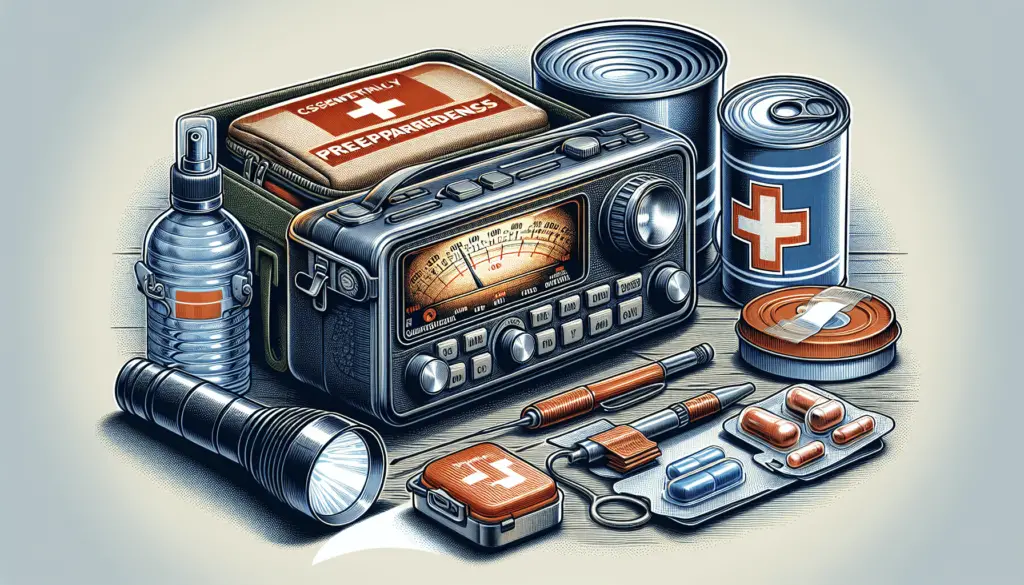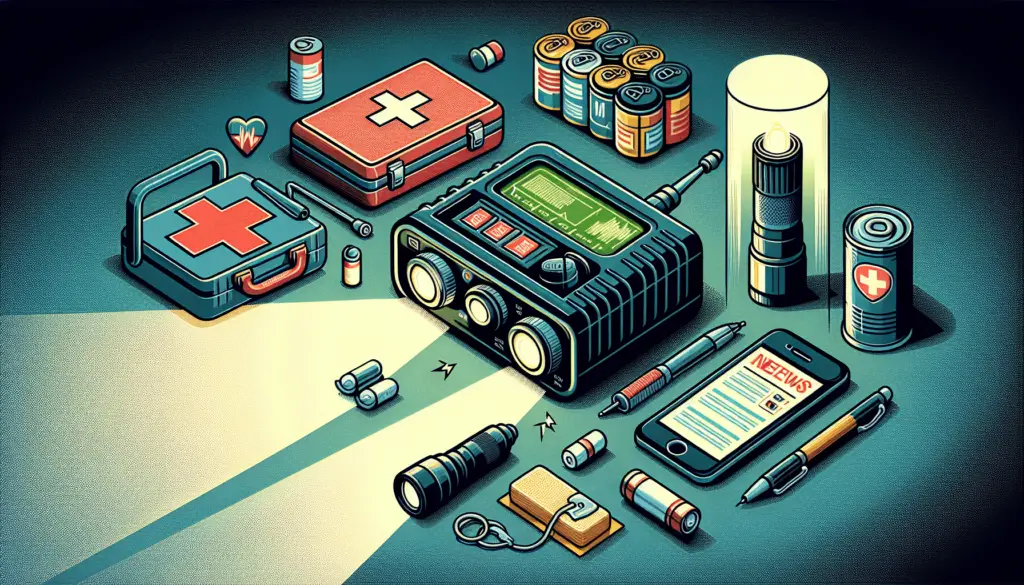Welcome! In this article, you will learn valuable tips on how to stay informed during a disaster. Whether it’s a natural catastrophe or a man-made crisis, staying informed is crucial for your safety and well-being. From utilizing emergency alert systems to tuning in to local news broadcasts, we will provide you with essential tools to help you stay informed and prepared during challenging times. Stay tuned for some practical advice on how to navigate through emergencies with confidence and peace of mind. Have you ever wondered how to stay informed during a disaster? Whether it’s a natural disaster like a hurricane or an emergency situation like a power outage, it’s crucial to have the right information to stay safe and make informed decisions. In this article, we’ll explore various ways you can stay informed during a disaster, from traditional media to modern technology. Let’s dive in and learn how to stay informed and stay safe when disaster strikes.

Traditional Media
When a disaster strikes, traditional media sources such as television, radio, and newspapers can be a reliable source of information. These outlets often have dedicated teams of journalists and reporters who work around the clock to keep the public informed about the latest developments. Tuning in to these sources can provide you with valuable information on evacuation orders, shelter locations, and emergency contact numbers. During a disaster, it’s essential to have access to traditional media sources to stay informed and know what actions to take to ensure your safety.
Television
Television is a powerful medium for transmitting real-time information during a disaster. Local news channels often provide live coverage of unfolding events, updates from local authorities, and interviews with experts. Make sure to have a battery-powered or hand-cranked portable television in your emergency kit, as power outages are common during disasters. Tune in to your local news channel for the latest updates on the situation in your area.
Radio
Radio is another valuable tool for staying informed during a disaster. Many communities have dedicated emergency broadcast stations that provide continuous updates on weather conditions, evacuation orders, and road closures. Invest in a battery-powered or hand-cranked radio and keep it in your emergency kit. Tune in to your local emergency broadcast station for critical information during a disaster when other communication channels may be down.
Newspapers
While newspapers may not provide real-time updates during a disaster, they can still be a valuable source of information. Local newspapers often publish in-depth articles on disaster preparedness, emergency response plans, and community resources. Consider subscribing to your local newspaper or checking their website for helpful information before and during a disaster. Newspapers can provide valuable context and analysis to help you better understand the situation and make informed decisions.
Official Websites and Apps
In addition to traditional media sources, official websites and apps from government agencies and emergency management organizations can be a valuable resource during a disaster. These platforms often provide real-time updates, emergency alerts, and resources for preparedness and response. Having access to these websites and apps can help you stay informed and connected when traditional communication channels are overloaded or unavailable.
Federal Emergency Management Agency (FEMA)
The Federal Emergency Management Agency (FEMA) is a crucial resource for disaster preparedness and response in the United States. FEMA’s website and app provide information on how to prepare for different types of disasters, what to do during an emergency, and how to recover afterward. Sign up for FEMA alerts to receive real-time updates on disasters in your area and access valuable resources to help you stay safe and informed.
National Weather Service (NWS)
The National Weather Service (NWS) is responsible for issuing weather forecasts, watches, and warnings across the country. NWS’s website and app provide up-to-date information on severe weather events, including hurricanes, tornadoes, and winter storms. Stay informed about weather conditions in your area by checking the NWS website and app regularly and following their safety recommendations during a disaster.
Emergency Alert System (EAS)
The Emergency Alert System (EAS) is a national public warning system that broadcasts emergency messages to the public through various media outlets. EAS messages are sent out by federal, state, and local authorities to alert the public about imminent threats, such as severe weather, natural disasters, and terrorist attacks. Stay tuned to your local radio and television stations for EAS alerts during a disaster and follow the instructions provided to ensure your safety.
Social Media
Social media platforms have become an essential tool for sharing information and connecting with others during a disaster. From Twitter to Facebook, social media can provide real-time updates, emergency alerts, and community support when traditional communication channels are not available. By following government agencies, emergency management organizations, and local authorities on social media, you can stay informed and engaged during a disaster.
Twitter is a popular social media platform for sharing breaking news and updates in real-time. Many government agencies, emergency management organizations, and news outlets use Twitter to disseminate information during a disaster. Follow these accounts and turn on notifications to receive instant updates on evacuation orders, shelter locations, and emergency contacts. Use hashtags to search for relevant information on Twitter and stay connected with the latest developments in your area.
Facebook is another valuable tool for staying informed during a disaster. Many government agencies and local authorities have official Facebook pages where they post updates, emergency alerts, and resources for preparedness and response. Join community groups on Facebook to connect with neighbors, share information, and offer support during a disaster. Use Facebook’s safety check feature to let your friends and family know you are safe and check on the status of others in your network during an emergency.
Instagram may not be the first platform that comes to mind during a disaster, but it can still be a useful source of information. Many government agencies and emergency management organizations post visual updates and infographics on Instagram to educate the public about disaster preparedness and response. Follow these accounts on Instagram to stay informed about safety tips, emergency resources, and community initiatives in your area.
Mobile Apps
Mobile apps have revolutionized the way we access information and communicate with others, especially during a disaster. From emergency alert apps to weather tracking apps, there are a variety of mobile applications that can help you stay informed and prepared when a disaster strikes. Download these essential apps on your smartphone and have them ready to use in case of an emergency.
Red Cross Emergency App
The American Red Cross offers a free Emergency App that provides real-time weather alerts, safety tips, and information on emergency shelters and hospitals. The app also features interactive quizzes, checklists, and guides to help you prepare for disasters and respond to emergencies. Download the Red Cross Emergency App on your smartphone and customize your alerts based on your location and preferences to stay informed and safe during a disaster.
FEMA App
In addition to its website, FEMA offers a free app that provides access to disaster resources, emergency alerts, and preparedness tips. The FEMA app allows you to create a personalized emergency kit checklist, set up family communication plans, and find FEMA Disaster Recovery Centers near you. Stay connected with the latest updates on disasters in your area by downloading the FEMA app on your smartphone and enabling push notifications for emergency alerts.
Weather Channel App
The Weather Channel app is a valuable tool for tracking weather conditions and receiving severe weather alerts in real-time. The app provides detailed forecasts, radar maps, and storm alerts to help you stay informed about weather events in your area. Set up custom weather notifications based on your location and preferences to receive timely updates on thunderstorms, hurricanes, and other potential threats during a disaster. Download the Weather Channel app on your smartphone and stay ahead of the storm.

Community Resources
During a disaster, it’s essential to rely on your community resources for support, information, and assistance. Local government agencies, nonprofit organizations, and volunteer groups play a crucial role in providing resources and services to help residents cope with the impact of a disaster. By staying connected with your community and accessing these resources, you can receive the help you need and contribute to the collective effort to recover from a disaster.
Local Government Websites
Your local government website is a valuable resource for accessing information on disaster response plans, evacuation routes, and public safety alerts. Check your city or county website for updates on local emergencies, road closures, and shelter locations during a disaster. Sign up for emergency notifications through your local government’s alert system to receive critical information via email, text, or phone call. Stay informed about the situation in your area and follow the guidance provided by your local authorities to stay safe.
Community Emergency Response Teams (CERT)
Community Emergency Response Teams (CERT) are trained volunteers who support local emergency services and assist with disaster response efforts. CERT members receive training in basic first aid, search and rescue techniques, and disaster preparedness to help their communities during emergencies. Get involved with your local CERT program to receive training, connect with other volunteers, and support your neighbors in times of need. By joining CERT, you can help strengthen your community’s resilience and be better prepared for future disasters.
Nonprofit Organizations
Nonprofit organizations play a crucial role in providing disaster relief and recovery services to communities affected by a disaster. Organizations like the American Red Cross, Salvation Army, and United Way offer resources such as emergency shelters, food assistance, and mental health support to disaster survivors. Connect with these organizations in your area to learn about their services and volunteer opportunities. Consider donating to reputable nonprofits that are actively engaged in disaster response efforts to help those in need and make a positive impact on your community.
Conclusion
Staying informed during a disaster is essential for your safety and well-being. By utilizing a combination of traditional media, official websites and apps, social media, mobile apps, and community resources, you can access the information you need to make informed decisions and take appropriate actions during an emergency. Prepare in advance by creating an emergency communications plan, assembling an emergency kit, and staying connected with your community. Stay informed, stay safe, and stay prepared when disaster strikes.
